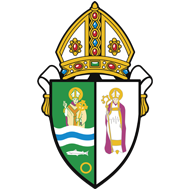Whilst Sweden was still basking in the glory of its Eurovision victory, I had the opportunity to visit Gothenburg as part of a delegation from our diocese. Revd. David Wostenholm and I attended the Bishop of Gothenburg’s Day for Deacons and I also had the opportunity to visit some churches and speak at a conference for ministry students. It was early June and we arrived in time to witness the Swede’s enjoying their Nationaldagsfirande (National Day celebrations). In Gothenburg there was a festival in Slottsskogen, the city’s largest park, featuring traditional music and dance. Despite the unpredictable weather, groups of revellers enjoyed picnics and took in the entertainment.
The Bishop’s Day for Deacons brought together over 200 deacons from across the diocese to consider the theme of Human Dignity. The first presentation was from Heather Roy of Eurodiakonia, a network of church-related providers of health and social services. Based in Brussels, it has 44 member organisations in 32 countries with a common commitment to promoting human dignity. Heather spoke of how we might follow Jesus’ example of showing love and bringing hope as we work in solidarity with the poor and challenge the systems which are pushing people into crisis.
Abbas is a former refugee who now volunteers with an organisation helping young asylum seekers integrate into Swedish society. He spoke about his harrowing journey to Sweden from his home in Afghanistan. He spoke of the forces which drove him to make the journey, the desperate measures he took to get there, his periods in jail and refugee camps and the complexities of seeking asylum. It gave me such an insight into the reasons why people are driven to leave their homes and undertake such heroic journeys in the hope of a better future. His message to the deacons was recognise that the small things they do to help make a big difference to those who, like him, are on the receiving end.
Toleransprojektet is a project run by Christer Mattsson who talked about his work with young people in racist gangs and preventative work in schools. His presentation provided an exploration of how best to address the xenophobia which is re-emerging in our societies. He described the impact of empathic listening and encouraging people to become more than the views they hold so that they recognise their value as individuals and develop a broader identity.
Bishop Per Eckerdal concluded the day with a reflection on human fragility. He described it as an inheritance and a hallmark which connects us as people. For many of us suffering is hard to deal with because we are alienated from our human condition; that life isn’t robust. He reminded us that, rather than disappearing into the anonymity of humanity, we are seen and loved by God who knows what we are made of, what we need and who we are.
At the Ministry Students conference I spoke about the social commitment of the Scottish Episcopal Church and St John’s, Dumfries in particular. I described the structures at provincial and diocesan level which support social action and the Mission Action Plans congregations are encouraged to develop to take forward mission and social action in their communities. Principally I spoke about St John’s Church’s support to our local food bank, our link with the food and clothing projects run by North West Dumfries church, and the involvement we have in Community Chaplaincy Listening.
This was followed by a short bible study in small groups. My group looked at Luke 9 where Jesus sent out his disciples to proclaim the kingdom of God and heal the sick. After taking a moment to reflect on the passage in silence using Imaginative Contemplation there was a chance for discussion in Swedish and English. The students compared their self-reliance with the challenge of depending on other peoples’ hospitality. They also noticed how the disciples stayed only where people were open to their message and ministry and considered the implications for their own ministries.
The following day I was shown around the diocesan office; located in one of Gothenburg’s tallest buildings near the harbour, affectionately dubbed The Lipstick. It is a bright, well-designed centre with breathtaking views across the city. There I learned about the geography of the diocese as well as the diverse challenges facing its church communities. I also visited three churches during my stay. The first was in north-east Gothenburg where there are large numbers of immigrants and asylum seekers. It runs a range of community projects including a thrift shop, Swedish language classes and healthcare clinics. The next was a church in a coastal village where I participated in a lunch club for older people and a prayer service. The third church was in a wealthy suburb south of Gothenburg. Here I learned about the history and strong musical tradition of the Church as well as the Church’s role in maintaining graveyards throughout Sweden.
My visit gave me a fascinating glimpse into the Church of Sweden and the opportunities and challenges it is facing. It is vibrant and diverse and, judging by the people I had the pleasure to meet, utterly committed to proclaiming God’s kingdom and promoting hope healing and humanity within Swedish society.
Harriet Oxley





